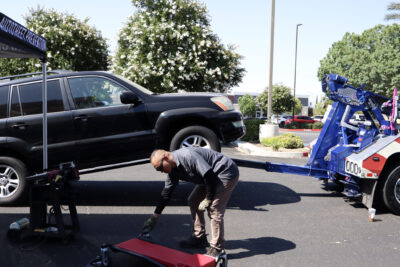Technology moves fast. Many business owners struggle to stay informed. You might feel overwhelmed by constant updates and wonder which tools are worth your time and money. The fear of falling behind is real. Here’s the good news: New tech doesn’t have to be confusing. For example, businesses that adopt AI early often see faster growth compared to those who wait. Staying ahead isn’t about knowing everything—it’s about recognizing what fits your goals. This post will guide you in identifying opportunities in the innovation process. You’ll learn how to assess options, develop ideas, and make smarter decisions for your business. Ready? Let’s begin!
Identifying Opportunities in the Innovation Pipeline
Identifying new trends can seem like an overwhelming challenge. Businesses that respond swiftly to these findings often secure a competitive advantage.
Recognizing emerging technologies
Identifying new technology early provides your business with an advantage. Artificial intelligence (AI), blockchain, and quantum computing are changing how industries function today. Companies in retail use AI to tailor shopping experiences while financial institutions apply blockchain for secure transactions. Keeping up with developments helps leaders evaluate potential opportunities more quickly. For instance, wearable technology has expanded significantly, with 1 billion devices shipped worldwide in 2023 alone. Those who embrace such trends early often gain market share before competitors can react.
Aligning use cases with market needs
Identifying emerging technologies is only part of the challenge. Connecting these advancements with actual market needs creates growth opportunities. Businesses must examine current market challenges, not just trends, to align technology applications with what customers truly require. For instance, a company adopting AI should prioritize addressing specific problems like automating customer support or improving inventory forecasting accuracy. Skipping feasibility assessments wastes time and resources. Before proceeding with development, evaluate concepts against practical scenarios and target audience expectations. Consider how a new product integrates with existing workflows or addresses critical challenges. This alignment enhances the pipeline’s efficiency and supports successful market launches when transitioning from ideation to execution phases.
Building the Foundation for Innovation
Laying the groundwork is critical for turning ideas into realities. Start small, test smart, and watch concepts grow.
Developing a proof of concept (POC)
Testing ideas early saves time and money. A proof of concept (POC) helps confirm if your idea works in practical scenarios. It focuses on one feature or solution, simplifying the process of testing feasibility before a significant investment. Create a small-scale model with fundamental functionality. Use it to gather input from stakeholders, clients, or trusted advisors like 7tech’s support team. This method minimizes risks and identifies potential challenges early in development.
Scaling innovative ideas for measurable results
Building a proof of concept is just the start. Expanding takes that small success and reproduces it across larger markets or operations. Focus on refining processes to handle increased demand without losing efficiency. Use data-driven decisions to identify what works best in your initial tests. This approach minimizes risks and helps foster growth. Start small, but act quickly once results show promise. Align expansion strategies with specific goals, like entering new markets or improving productivity metrics. Simple adjustments—such as automating repetitive tasks—can make significant impacts over time. Expanding isn’t just about growing; it’s about growing smart.
Integrating Technology to Shape the Future
Technology changes how businesses think, act, and develop. It leads to smarter decisions and more effective strategies for the future.
Leveraging AI for predictive insights
AI predicts trends by analyzing data patterns. It identifies customer behaviors, market shifts, and potential risks faster than traditional methods. For example, a retail business might use AI to anticipate inventory needs during holiday seasons. This reduces waste and increases profits. Small businesses can rely on AI to improve decisions based on real-time insights. It helps prioritize actions that align with long-term goals. By understanding what’s likely to happen next, companies stay ahead of competitors in the development process.
Utilizing NLP to enhance customer experience
Natural Language Processing (NLP) helps businesses understand customer needs better. It analyzes text-based data like emails, chats, and reviews to detect sentiment and intent efficiently. For instance, chatbots with NLP can resolve queries more rapidly by identifying concerns without human involvement. This saves time while keeping customers satisfied. Personalization becomes easier using insights derived from past interactions or preferences through NLP. Businesses can forecast which services or products might interest customers next. These improved systems make recommendations feel less intrusive and more relevant.
Applying design thinking for business transformation
Design thinking shifts focus toward addressing real business challenges with human-focused solutions. Businesses can apply this approach to rethink customer journeys, enhance products, or streamline operations. It promotes rapid prototyping and testing, assisting teams in finding practical answers more quickly. Address complex problems by dividing them into smaller components. Generate ideas that directly resolve customer pain points. Rely on data-driven insights to confirm concepts before expanding them within your market structure. This process transforms abstract ideas into measurable business results effectively.
Democratizing Innovation Across Teams
Innovation thrives when every voice matters. Breaking barriers between teams sparks fresh ideas and faster progress.
Bridging silos for collaborative innovation
Departments often act like isolated sections. Teams focus solely on their own objectives, methods, and tools. This creates challenges that hinder progress. Removing these divisions allows ideas to move freely across the business structure. For example, aligning marketing with product development can quicken new product development and market launch strategies. Host regular brainstorming sessions where cross-functional teams exchange insights. Leverage services like OXEN’s technical support to enhance collaboration through optimized tech infrastructure. Promote knowledge-sharing platforms for real-time collaboration. These methods not only improve project management but also support data-informed decisions that achieve results more quickly than traditional approaches.
Encouraging cross-functional synergy
Teams collaborating across various functions inspire new ideas. A marketing group can offer customer insights, while IT ensures technical feasibility. Coordinating these strengths accelerates decision-making and minimizes inefficiencies in the creativity process. Transparent communication eliminates barriers between departments. Frequent meetings provide opportunities for brainstorming and feedback. Training employees across roles fosters mutual understanding, leading to smoother and more effective collaboration.
Addressing Generational Influence in Innovation
Different generations bring distinct mindsets to problem-solving. Tapping into these perspectives sparks fresh ideas and fosters progress.
Engaging Gen Z as digital natives
Appealing to Gen Z demands tech-savvy strategies. This group grew up with smartphones and quick access to information. They prefer platforms like Instagram, TikTok, and Snapchat over traditional methods of communication. Businesses should focus on using these channels for promotions or feedback loops. Gen Z values authenticity and speed. A delayed response can lose their interest quickly. Use AI tools to analyze real-time trends or tailor interactions digitally. Offering purpose-driven products tied to social good also resonates well with them, aligning new efforts with their values effectively.
Bridging generational divides in corporate innovation
Younger employees often prioritize speed, tech-savviness, and digital tools for progress. Older team members may value experience, proven methods, and structured frameworks. Both perspectives bring strengths, but can conflict if left unaddressed. Pairing seasoned professionals with Gen Z employees fosters knowledge-sharing and new ideas. Create spaces where all age groups contribute equally to the innovation process. Collaborative workshops or reverse mentoring sessions allow different generations to build rapport and align goals.
Driving Innovation Through Agile Strategies
Change thrives on experimentation and bold ideas. Companies that move quickly gain an edge in crafting fresh solutions.
Creating a culture of experimentation
Test small ideas quickly. Encourage teams to pilot projects without fear of failure. A single failed test often reveals crucial data for future attempts. Reward curiosity and calculated risks, even when outcomes don’t meet expectations. Create spaces where feedback flows freely. Equip employees with tools that make trials simpler and faster. Offer resources that support both successes and missteps equally. Experimentation lays the groundwork for self-disruption strategies, next in line to sustain growth avenues.
Supporting self-disruption for long-term value
Challenging the status quo sparks growth. Businesses that question their products or processes discover hidden opportunities. Netflix, for example, shifted from DVD rentals to streaming before competitors gained traction. This bold move reshaped its market position and secured long-term success. Encouraging teams to experiment reduces the fear of change. Small-scale testing of new ideas helps mitigate risks while driving progress. Start by identifying outdated systems or practices within your operations. Replace them with approaches aligned with current technology adoption trends like AI-based analytics or real-time feedback loops.
Sustainability and Innovation
Sustainability drives smarter tech decisions for greener outcomes. New ideas are reshaping industries to prioritize long-term environmental impact.
Energizing sustainable solutions
Businesses can adopt energy-saving systems to reduce costs and support sustainability. Solar panels, LED lighting, and intelligent energy management tools reduce waste while decreasing utility bills. These changes benefit both the environment and financial outcomes. Switching to sustainable materials for production reduces environmental impact. Recycled goods or biodegradable packaging address growing consumer demands for eco-friendly products. Small adjustments like these create long-term benefits in competitive markets.
Innovation’s role in achieving net-zero goals
Reducing carbon emissions demands rethinking energy use and resource management. New technology enhances this shift by promoting renewable energy, efficient materials, and smart systems. Electric vehicles, powered by advances in battery storage, set the stage for cleaner transportation. Smart grids improve power distribution while reducing waste. Advanced carbon capture technologies also play a key role in lessening industrial impacts.
Energy transition depends on collaboration between industries and science. AI-driven tools predict patterns to minimize energy consumption across sectors like manufacturing and logistics. Sustainable product development focuses on biodegradable or recyclable materials to cut landfill waste. Early adoption of these tools positions businesses as leaders in green progress while meeting net-zero targets effectively.
Measuring Innovation Success
Track progress with clear milestones to stay on course. Gather honest feedback to refine and improve outcomes.
Capturing engagement and feedback
Collecting feedback helps improve new product development. Encourage customers to share honest opinions through surveys or one-on-one conversations. Focus on decisions based on data by analyzing trends from this input. Quick adaptation leads to better outcomes. Actively respond to user critiques with minor adjustments or feature tweaks promptly. Testing concepts this way can transition smoothly into “Enhancing product concept testing with data.”.
Strengthening product concept testing with data
Data can eliminate uncertainty from product concept testing. Examining customer behavior, preferences, and feedback helps improve ideas before reaching the market. Trends in survey results or online interactions reveal what customers value most. A/B tests compare versions of a product concept to evaluate performance differences. Monitoring indicators like click rates or purchase intent aids in making well-informed decisions. Businesses save time and money by concentrating on validated concepts rather than uncertain assumptions.
Conclusion
The future isn’t waiting. It’s being made right now with every advancement in tech. Businesses that adopt new tools and ideas drive this progress. The creation pipeline is the path forward, shaping what comes next. Stay curious, stay prepared, and keep constructing what’s possible.






